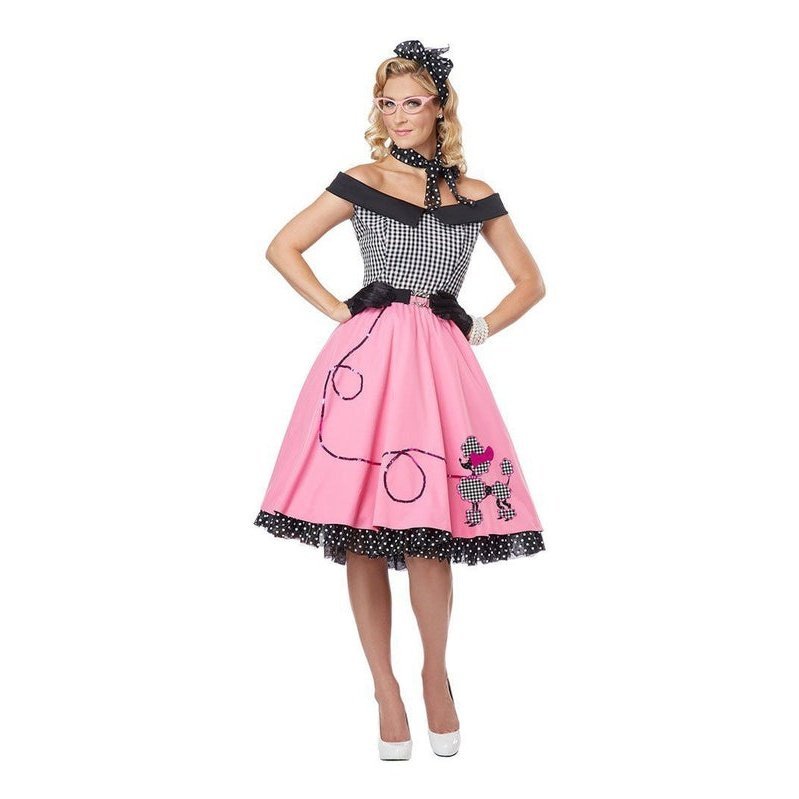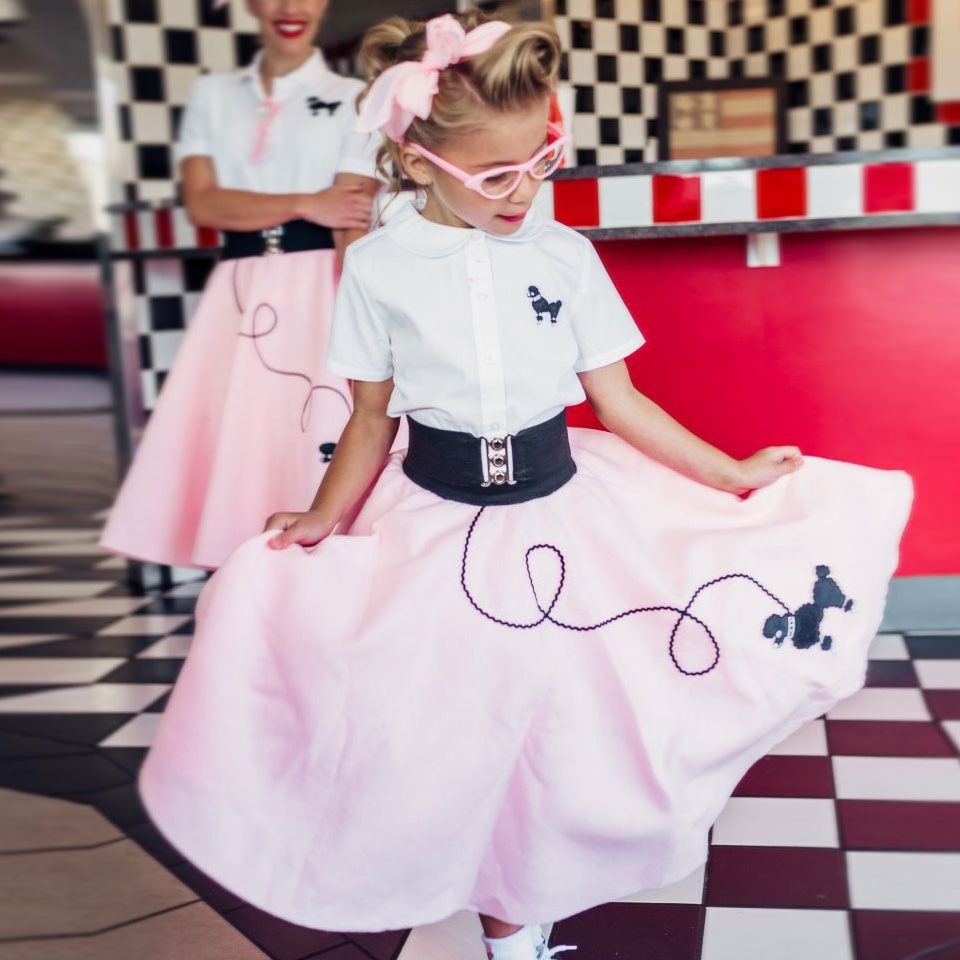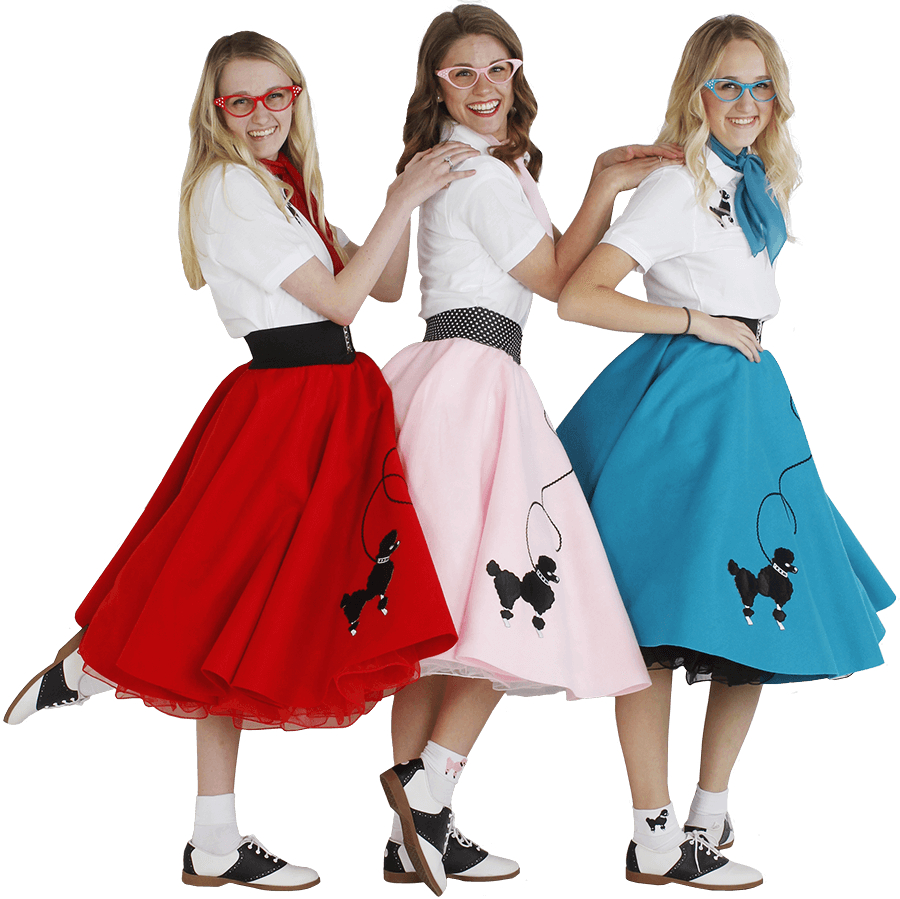Introduction to the Poodle Skirt Era
The poodle skirt era represents a vibrant chapter in American fashion history, specifically during the 1950s. Characterized by its playful designs and youthful spirit, this fashion movement became synonymous with the post-World War II economic boom. The poodle skirt, with its iconic felt appliqué of a poodle, captured the essence of the era—nostalgia, rebellion, and carefree living.
During this time, fashion played a crucial role in expressing individuality and social status. As young people sought to differentiate themselves from previous generations, skirts adorned with colorful motifs became major fashion statements. The poodle skirt era was not just about clothing; it encapsulated a cultural phenomenon that influenced music, dance, and social dynamics. This guide explores the history of poodle skirts, their cultural significance, popular styles, and how the era’s fashion is celebrated today. Understanding this movement can offer insights into the lasting impact of 1950s fashion on contemporary culture.
The Origins of the Poodle Skirt
The Birth of the Poodle Skirt
The poodle skirt was introduced in the mid-1950s, emerging as a youthful and playful fashion choice for teenage girls. The style was designed by Julie Lynn “Judy” R. Sweeney and popularized by the New York-based designer, Mame A. T. M. Lynch. Originally made from felt, these skirts featured a wide circle cut that allowed them to flow and twirl, creating a lively movement when worn.
The iconic design often included an appliqué of a poodle, a small dog breed widely adored during that time. Employing vibrant colors and embellishments, the poodle skirt quickly became a symbol of youthful exuberance. The ability to customize these skirts made them even more appealing. Young girls could choose different colors, sew on various designs, or add personal touches, making each poodle skirt unique to the wearer.

Cultural Context of the 1950s
The poodle skirt’s rise coincided with significant cultural shifts in the United States. The post-war era brought about an economic boom, leading to increased disposable income for many families. As young people began to assert their independence, there was a marked shift away from the conservative styles of the previous decades, paving the way for playful and expressive fashion.
The influence of popular culture cannot be understated. Movies, music, and television programs featured youthful characters embracing a new wave of fashion. Icons of the era, like Elvis Presley and the characters from “American Graffiti,” helped solidify the playful, rebellious nature of the poodle skirt as part of the broader cultural conversation. This cultural milieu set the stage for the skirt’s acceptance and relevance among American youth.
Key Features of Poodle Skirts
Design and Aesthetics
Poodle skirts were designed to be eye-catching and plentiful, often featuring a full circle cut. This design allowed the skirts to billow out when worn, creating a playful look. They typically reached just below the knee, making them a modest yet stylish option for young girls and teenagers.
The standout feature of poodle skirts was the colorful appliqué, which depicted a poodle or other whimsical motifs. These designs were usually stitched onto the fabric with contrasting thread, creating a visually striking effect. Besides poodles, other motifs included musical notes, cars, and hearts, showcasing the creativity and individuality of the wearer. The skirts could also be adorned with embellishments like sequins and rhinestones, adding a touch of glamor to the design.
Fabric and Colors
The original material used for poodle skirts was felt. Felt provided a sturdy yet flexible fabric that was easy to sew, making it accessible for home crafters as well. This choice of fabric also added warmth and structure to the skirts, accommodating the varying climates of America.
Poodle skirts were produced in a rainbow of colors, from pastel pinks and blues to bold reds and blacks. These vibrant colors were often combined with darker or contrasting hues for the appliqué designs. Personal preferences drove color choices, allowing girls to express their personalities through their skirts. This variety in fabric and color contributed to the skirts’ popularity and ensured they appealed to a wide audience.

Cultural Significance of the Poodle Skirt
Youth Identity and Rebellion
The poodle skirt era significantly influenced the identity of American youth. As teenagers sought to assert their independence, the skirt became an emblem of their desire to break away from adult norms. Poodle skirts were often associated with rebellious activities like sock hops, a popular form of social dance in the 1950s.
The skirts allowed young women to differentiate themselves from their mothers’ more conservative styles. They embraced bright colors and playful designs that resonated with the youthful spirit of the time. By wearing poodle skirts, teenage girls could express their individuality, desires, and hopes, marking a cultural shift where youth culture increasingly influenced fashion trends.
Music and Dance Influence
The poodle skirt era coincided with the rise of rock and roll music, which became the soundtrack of youth culture in the 1950s. The music genre fostered an environment where individual expression flourished. Dance styles such as the Twist and the Jitterbug were popular, and girls would often wear their poodle skirts during these lively celebrations.
Iconic musicians, like Elvis Presley, became synonymous with the fashion of the time. Their music inspired youth to embrace poodle skirts, dance, and engage in social activities. Events such as sock hops, where young people gathered to dance and socialize, showcased the vibrant culture associated with the poodle skirt. The combination of music, dance, and fashion created a unique atmosphere of joy and rebellion, solidifying the skirt’s place in 1950s culture.

Popular Styles of Poodle Skirts
Traditional Styles
Traditional poodle skirts featured the classic full-circle design and typically showcased a single appliqué design, often of a poodle. These skirts were usually worn with a fitted top or a simple blouse, allowing for a balanced and flattering silhouette. This classic outfit became a staple for young girls during the 1950s, suitable for various occasions such as school dances and community events.
Many girls also wore saddle shoes or bobby socks to complete the ensemble, enhancing the vintage aesthetic of the look. The simple yet appealing outfit quickly became a fashion classic among youth, symbolizing innocence and playfulness. The graceful movement of the skirt when twirling added a sense of joy to the overall experience.
Variations and Innovations
As the poodle skirt gained popularity, designers began to introduce variations in length, design, and embellishments. Skirts featuring layered ruffles or contrasting trims became fashionable, allowing for more elaborate looks. Some skirts even incorporated multiple appliqués, featuring various designs that reflected the wearer’s interests, such as musical instruments or sport emblems.
The introduction of poodle skirts for women beyond the teenage demographic also marked an evolution of the design. Adult women embraced the playful skirt style, often pairing it with stylish blouses or fitted jackets for a more sophisticated appearance. This expansion showed how influential the poodle skirt was, transcending its original design to capture a broader audience.
Choosing the Right Poodle Skirt
Finding the Right Fit
When selecting a poodle skirt, finding the right fit is essential for comfort and style. Most poodle skirts feature an elastic waistband or tie, allowing for a custom fit. It is essential to measure your waist before making a purchase to ensure the waistband fits comfortably without being too tight or loose.
Additionally, consider the length of the skirt. Poodle skirts typically come in various lengths—from mid-calf to knee-length. Women should choose a length that complements their height and style preferences. Trying on different styles can help determine the best fit and design that suits personal taste.
Styling Tips
Styling a poodle skirt requires attention to detail to achieve the desired look. Start by selecting a fitted top to balance the fullness of the skirt. Classic options include tucked-in blouses, fitted turtlenecks, or simple tank tops, which enhance the figure while accentuating the skirt’s playful design.
Accessories play a key role in completing the outfit. Consider wearing a simple necklace or a scarf around the neck for added flair. Footwear choices, like saddle shoes or comfortable ballet flats, can further enhance the vintage vibe. Ultimately, the personal touch in styling will make the outfit uniquely yours, celebrating the essence of the poodle skirt.
The Poodle Skirt in Modern Fashion
Revival in Popular Culture
While the poodle skirt era primarily flourished in the 1950s, the design has enjoyed a revival in modern fashion. Today, retro styles frequently resurface, with designers taking inspiration from past trends. The poodle skirt has made appearances in fashion shows and popular media, reflecting nostalgia for the era.
The popularity of vintage-themed events and festivals has also contributed to the poodle skirt’s resurgence. Many retro-inspired gatherings encourage attendees to embrace classic fashion, with poodle skirts being a favored choice among participants. This revival shows how past fashion trends can come full circle, allowing a new generation to appreciate their charm.
Influence on Contemporary Designers
Modern designers often incorporate poodle skirt elements into their collections, marrying traditional styles with contemporary aesthetics. The playful appliqués and volume can be updated with modern fabrics and cuts, appealing to new audiences. Many brands have introduced skirts that pay homage to the classic design while offering fresh elements that resonate with modern fashion sensibilities.
These updates may include eco-friendly fabrics, versatile designs suitable for different occasions, and innovative styling options. By adapting the classic poodle skirt to fit current trends, designers ensure that its legacy endures, keeping the spirit of 1950s fashion alive.
Conclusion: Celebrating the Poodle Skirt Era
In conclusion, the poodle skirt era represents a significant chapter in fashion history. Its unique design, cultural significance, and playful spirit continue to inspire modern fashion. The ability to transition from childhood innocence to a symbol of youthful rebellion makes the poodle skirt a remarkable piece of clothing.
Understanding the origins of this iconic fashion piece allows us to appreciate its relevance in contemporary culture. By exploring various styles, selecting the right fit, and incorporating the poodle skirt into modern outfits, both nostalgic enthusiasts and new generations can celebrate this charming fashion statement.
As we look back on the poodle skirt era, we recognize its impact on youth culture and fashion trends. Embracing the spirit of the poodle skirt reminds us that fashion is not merely about clothing; it is a reflection of times, movements, and individual expression that continues to evolve.


